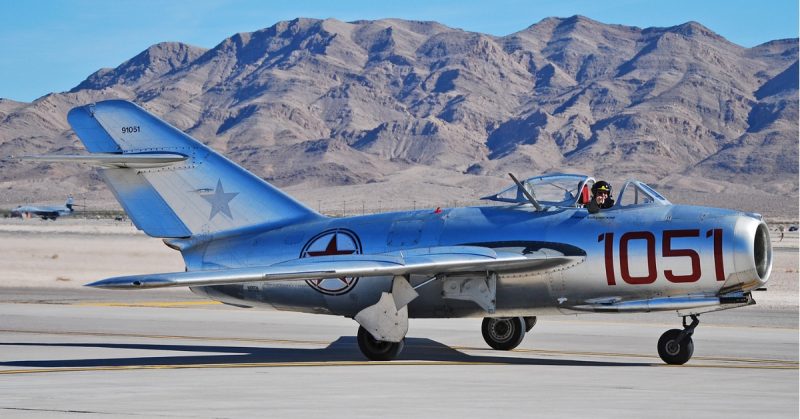One of the most feared fighter aircraft of the twentieth century, when it appeared in the skies of Korea, sent a message to the confident Western world that was in a state of shock.
July 1949, a new generation of MiG is exhibited for Joseph Stalin and the spectators at an air parade in Moscow, the creators of the MiG-15 were awarded by Stalin.
MiG-15
The MiG-15 had a maximum speed of 1043 km/h and was capable of flying at an altitude of 15,000 meters. The MiG-15 had a powerful armament – 2 cannons of 23mm and one of 37mm. The wings were crossing the fuselage completely, the cockpit was in the front of the plane allowing great vision. The air for the engine entered through a large hole in the front of the plane.
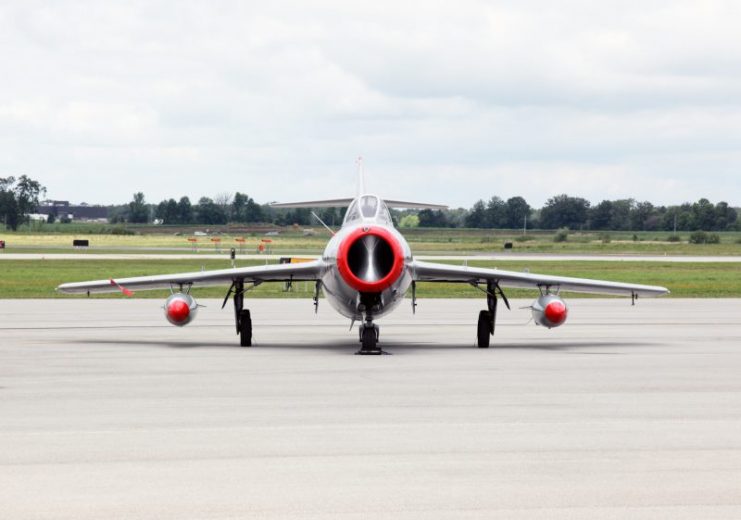
On May 1, 1950, a MiG 15 flew over Moscow’s red square, a sign that they were already being assembled in numbers.
Until the arrival of the American F-86 Sabre, the Soviet Jet eclipsed any fighter aircraft for its maneuverability and surprising firepower.
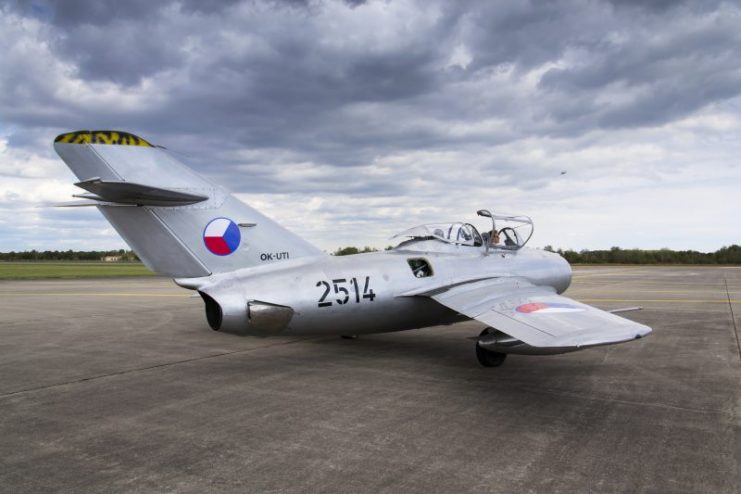
F-86 Sabre – The rival of the MiG-15.
In the spring of 1949, an F86 Sabre aircraft from the US Air Force reached supersonic speeds, a breakthrough in aeronautical science. The Soviets were not yet at the level of the Americans in the race of the aircraft fighters of the next generation.
A year later, over the Korean sky, the American pilots of the F86 Sabre and the Soviet pilots aboard the MiG 15 fought face to face in aerial battles. This era of air combat changed forever after the confrontation between these titans of the air.
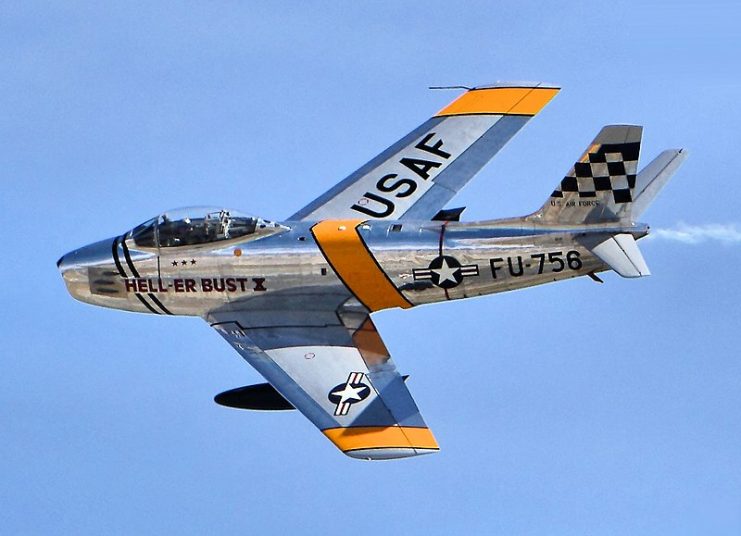
MiGs Come into Action
On June 25, 1950, North Korea launched a massive invasion against South Korea. The response from the United States was overwhelming, and in just 4 months the North Koreans were forced to withdraw.
The American B-29 Superfortress bombers flew the skies of North Korea with little resistance, while the fighter bombers attacked troops at will. By November 1950, the Allied forces had advanced through North Korea towards the Chinese border, along the Yalu River.
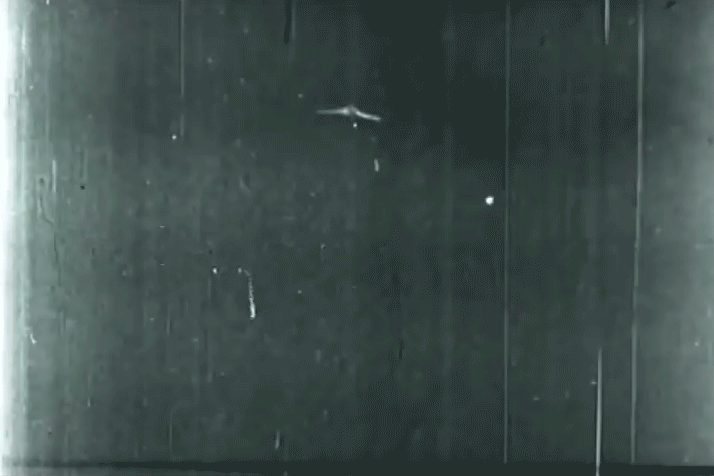
Chinese Communist leader Mao Zedong needed a cause to unite his young nation, and the American advance to the Chinese border gave him the perfect opportunity. On October 19, 1950, under the command of General Peng Dehuai, the Chinese army forced the advance units of the US Army in North Korea to make a desperate retreat into South Korea. However, the United States still had control of the Korean skies.
Stalin decided to secretly support his communist ally, and MiG 15s were landed in China to be piloted by Soviet veteran pilots of the Second World War disguised as Chinese soldiers. These MiGs bore Chinese flags in their tails and were incorporated into the People’s Liberation Army Air Force (PLAAF).
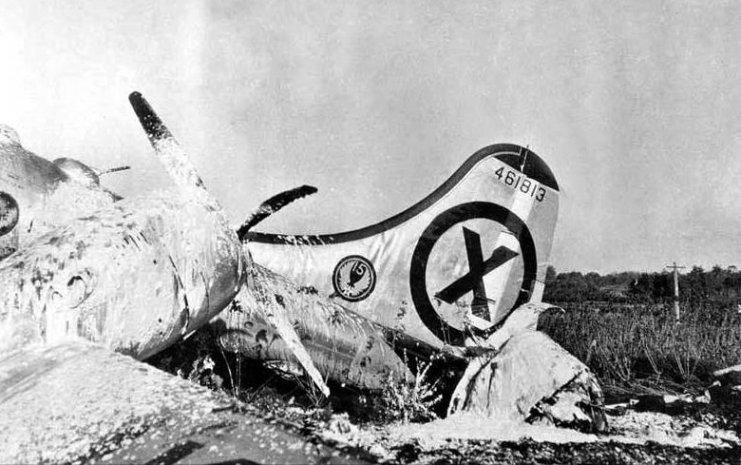
The MiGs operated from air bases located around Antung, north of Yalu River in China.
The first battle of the MiGs
On November 1, 1950, the MiG 15 came into action over the North Korean sky, it snatched the air supremacy from the Americans, shot down bombers, and Lockheed F-80 Shooting Stars, F-51D Mustangs, and Republic F-84 Thunderjet fighter jets. The MiG arrival was a huge blow for the Americans and UN Forces.
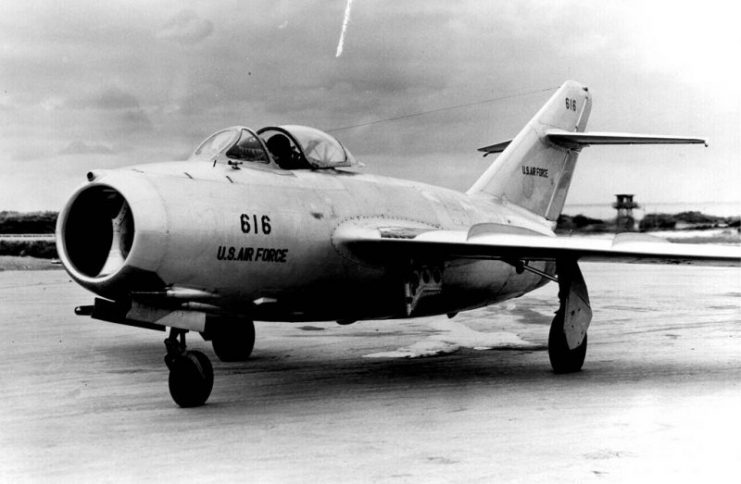
MiG Alley
The area between the Yalu River on the Chinese border and the central part of North Korea was known as MiG alley, and Western planes entered at their own risk.
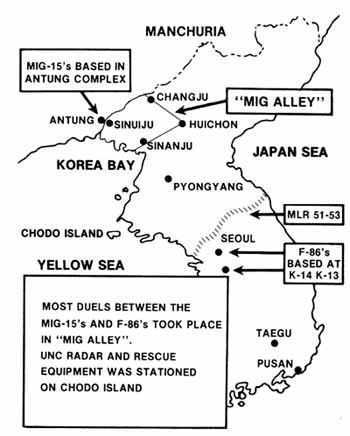
The new rival of the MiG, the F-86 Sabre
The air supremacy of the MiG-15 was about to be challenged. In a few weeks, a squadron of F-86 Sabre’s was transported from the United States to confront the MiG-15. The F-86 Sabre was a transonic jet fighter aircraft.
The MiGs were no longer the sole masters of the Korean sky. The first battles demonstrated to the pilots of the MiG-15s that it was necessary to learn new tactics like never facing a Sabre horizontally. The MiG 15 had a climb rate higher than 750 meters per minute giving it an advantage.
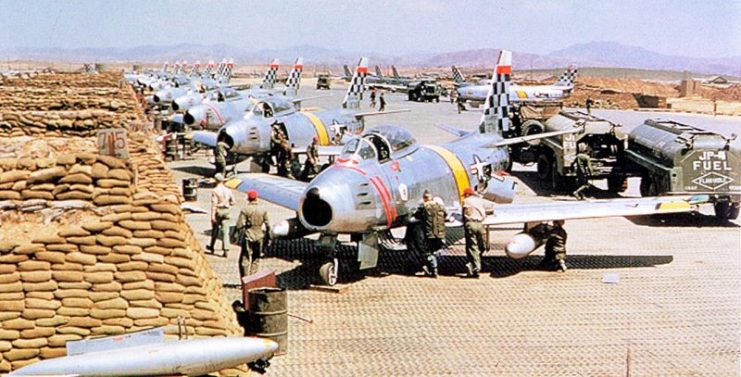
The MiG 15 engine was more powerful, a MiG-15 can climb and escape from combat against a Sabre, but a Sabre could not do that against a MiG-15.
The MiG-15 was able to withstand significant damage in combat, but the armament of the MiG was significantly better than the F-86 Sabre. However, in these dogfights, the experience of each pilot was decisive.
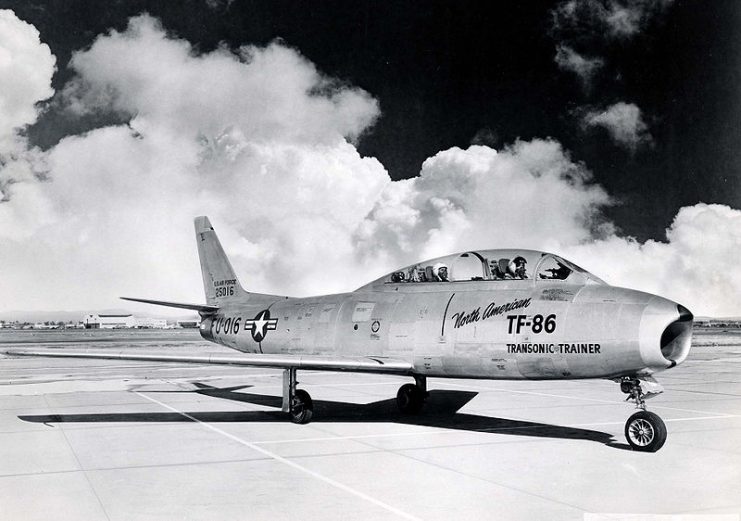
The prey of the MiGs, American B-29 Superfortress bombers
The main function of the MiG 15 in the war was to intercept the American B-29 bombers attacking North Korea escorted by the Sabres. The MiGs were armed with cannons capable of reaching a target from a distance of 1,000 meters, while the machine guns aboard the American B-29 bombers had only a range of 400 meters.
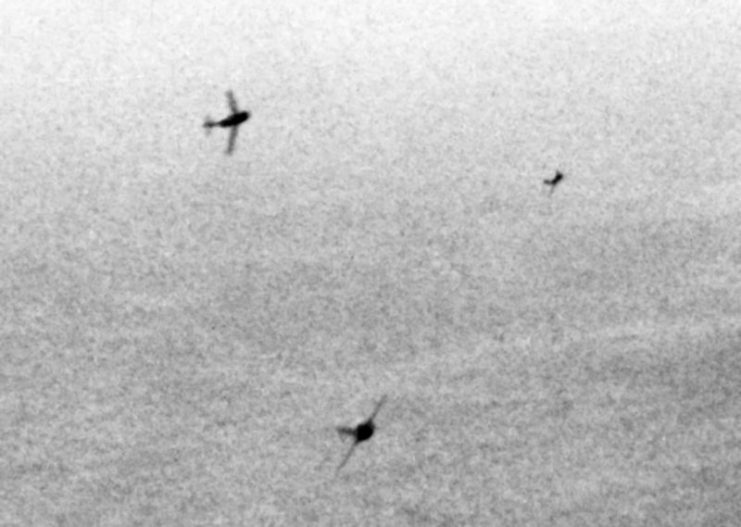
The strategy of the MiG-15 pilots
The pilots of the MiG-15 took advantage of being able to fly at higher altitudes, they flew at up to 15,000 meters and attacked the bombers that passed underneath them.
The MiG-15 squadrons operated in large groups, but the basic formation was a group of six MiG-15’s, divided into three pairs consisting of a leader and a support aircraft. Each pair played a specific role.
The first pair of MiG-15’s attacking the enemy Sabres. The second pair protecting the first pair. The third pair flying over the other two pairs, supporting them when necessary, this pair had more freedom and could also attack opportunity targets, such as a lone Sabre.
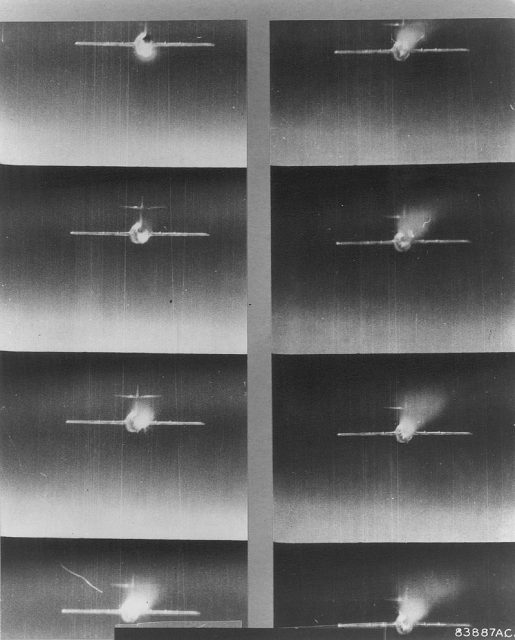
The feats of the MiG-15 pilots
On April 12, 1950, a large formation of 48 B-29s escorted by Sabres was sent to bomb a bridge over the Yalu River. The attack was repelled by MiG-15 squadrons, and the B-29 bombers who were unable to fulfill their mission.
October 23, 1951, MiG-15 squadrons attacked a formation of B-29 bombers that came flying in without fighter coverage. The Sabre F-86s came to protect the bombers but were delayed by four minutes, and the MiG-15s had no mercy. Many B-29 bombers were lost. To American aircrews, this day was called “black Tuesday.”
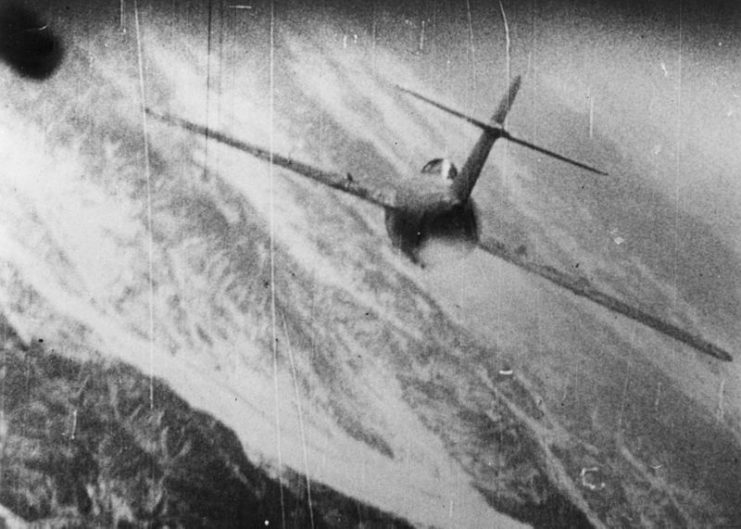
Participation of Soviet Pilots
For fear of a nuclear conflict, the pilots of the MiG-15s were not allowed to fly out of MiG alley to avoid falling prey to antiaircraft artillery and end up being captured. In addition, they had to communicate in Chinese during their missions, but this was not always possible and they often ended up speaking in Russian. The Americans intercepted many of these communications.
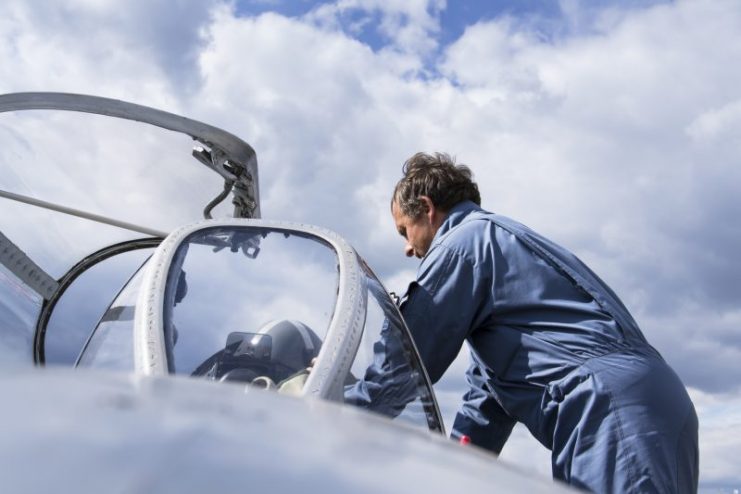
Colonel Yevgeny Pepelyaev – MiG-15 Ace.
Shot down an average of one enemy aircraft every 5 missions for a total of 20 aircraft: 16 Sabres, 2 F94s, an F98 and an F84.
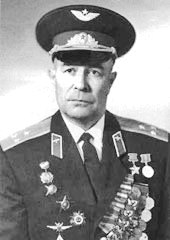
Moscow error
Joseph Stalin decided to rotate the MiG crews. The Soviet aces of the Second World War were replaced by young Soviet, North Korean and Chinese rookies. From that moment on, the Americans had greater success.
Operation Moolah
By the spring of 1953 the Korean War was at a deadlock. The US military, eager to obtain a MiG-15 offered a reward of $100,000 and political asylum to any pilot who brought over a MiG-15 to South Korea.
No Kum Sok, a young 21-year-old North Korean pilot landed his MiG-15 at Kimpo Air Base on 21 September 1953. All available fighters took off to avoid an enemy incursion with the intention of destroying the aircraft. The stolen MiG-15 was taken to Okinawa where it was dismantled and carefully studied. Eventually, it was sent to the United States, where the famous test pilot Chuck Yeager carried out exhaustive flight tests.
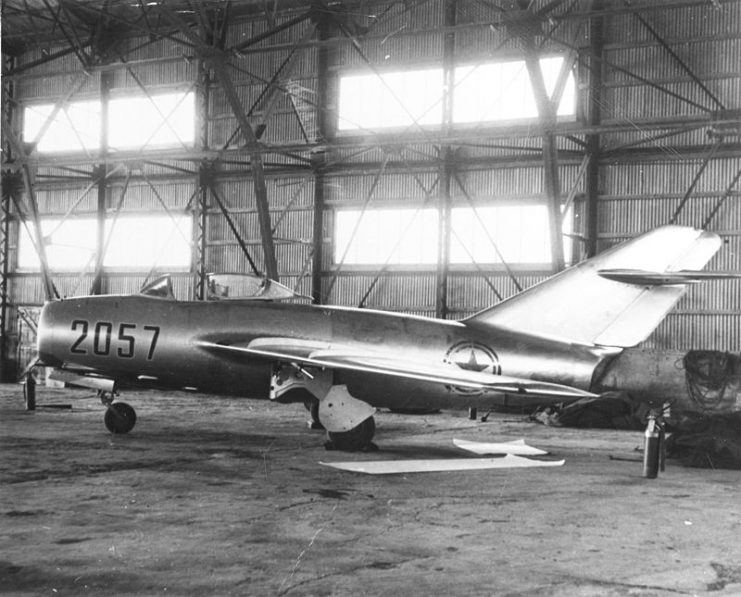
After Korea
During the Cold War, the MiG-15 participated in the Suez Canal Crisis in 1956, and 2 years later Sabres and MiG-15s clashed again in the Second Taiwan Strait Crisis.
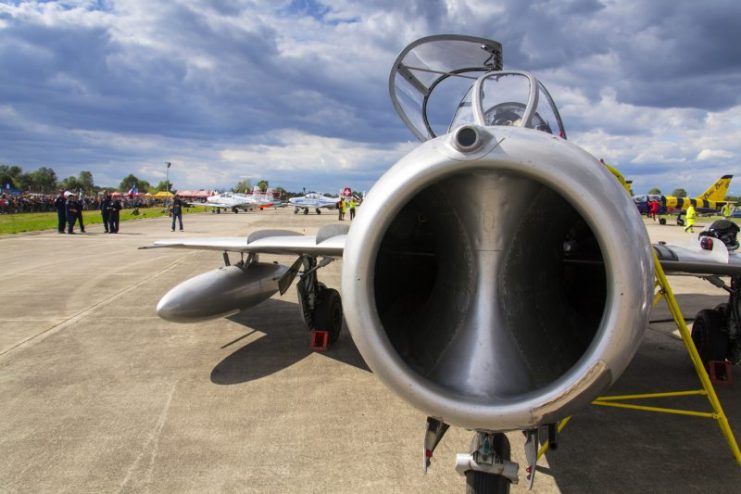
The MiG-15 is the most produced jet aircraft in history, with more than 12,000 units manufactured in the Soviet Union, and an estimated 6,000 units produced in Czechoslovakia, China and Poland.
